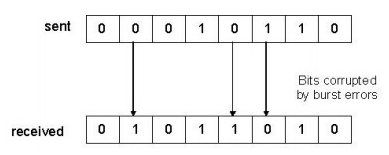Internet Architecture | Computer Networks - Computer Science Engineering (CSE) PDF Download
Internet Architecture
The internet architecturee evolved out of experiences with an earlier packet switched network called the ARPANET. Both the Internet and the ARPANET wer e funded by the Advanced Research Projects Agency (ARPA).
The Internet and ARPANET were around before the OSI architecture, and the experience gained from building them was a major influence on the OSI reference model. Instead of having seven layers, a four layer model is often used in Internet.
At the lowest level are a wide variety of network protocols, denoted NET1, NET2 and so on. The second layer consists of a single protocol the Internet Protocol IP. It supports the interconnection of multiple networking technologies into a single, logical internetwork.
The third layer contains two main protocols the Transmission Control Protocol (TCP) and User Datagram Protocol (UDP). TCP provides a reliable byte stream channel, and UDP provides unreliable datagram delivery channel. They are called as end to end protocol they can also be referred as transport protocols.
Running above the transport layer, a range of application protocols such as FTP, TFTP, Telnet, and SMTP that enable the interoperation of popular applications.
ERROR
Networks must be able to transfer data from one device to another with complete accuracy. Some part of a message will be altered in transit than that the entire content will arrive intact. Many factors like line noise can alter or wipe out one or more bits of a given data unit. This is known as errors.
TYPES OF ERRORS
There are two types. They are,
1. Single Bit Error It means that only one bit of a given data unit is changed from 1 to 0 or from 0 to 1.
2. Burst Bit Error It means that two or more bits in the data unit have changed.

- A burst bit does not necessarily means that the errors occur in consecutive bits
- The length of the bust error is measured from the first corrupted bit to the last corrupted bit. Some bits in between may not be corrupted
|
23 videos|171 docs|81 tests
|
FAQs on Internet Architecture - Computer Networks - Computer Science Engineering (CSE)
| 1. What is internet architecture? |  |
| 2. How is the internet architecture organized? |  |
| 3. What are the key components of internet architecture? |  |
| 4. How does internet architecture ensure reliability and scalability? |  |
| 5. What are the challenges in internet architecture? |  |
















